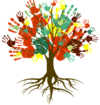
Healing After Domestic Violence: Steps to Recovery
Healing After Domestic Violence: Steps to Recovery” is a guide designed to help survivors navigate the emotional and physical recovery process after experiencing abuse. It outlines practical steps such as seeking professional support, building a safety plan, rebuilding self-esteem, and connecting with support networks.
What You’ll Learn
Understanding the Impact of Abuse
- Gain insight into the psychological, emotional, and physical effects of domestic violence.
- Recognize how trauma manifests in survivors and how it affects their well-being.
Building Emotional Resilience
- Learn strategies to regain your self-worth and confidence.
- Explore the importance of self-care and emotional healing techniques to rebuild strength.
Navigating the Healing Process
- Discover the different phases of recovery, from crisis management to long-term healing.
- Understand the significance of a safe support system in the healing journey.
Therapeutic Approaches to Recovery
- Learn about different forms of therapy, such as cognitive-behavioral therapy (CBT), trauma-informed care, and group therapy.
- Understand how professional help can facilitate your healing process.
Empowering Yourself Through Self-Advocacy
- Gain tools for setting boundaries and protecting yourself in future relationships.
- Explore how advocacy can play a role in reclaiming control over your life.
Developing Healthy Relationships
- Learn to recognize what healthy relationships look like and how to foster them.
- Understand the importance of communication and trust in rebuilding connections with others.
Regaining Independence
- Learn steps to regain financial, emotional, and physical independence.
- Explore how to rebuild your life and set goals for the future.
Overcoming Challenges in the Recovery Journey
- Recognize common hurdles survivors face and how to overcome them.
- Learn strategies to manage flashbacks, triggers, and moments of self-doubt.
The Role of Support Networks
- Understand the importance of surrounding yourself with supportive friends, family, or support groups.
- Learn how to identify and lean on trustworthy individuals who can provide emotional and practical help.
Celebrating Progress and Healing
- Embrace your progress, no matter how small.
- Recognize that healing is a lifelong process, and be kind to yourself as you move forward.

This guide offers a comprehensive roadmap for navigating the often difficult but ultimately empowering journey of recovery after domestic violence. You’ll gain the tools and knowledge needed to heal and rebuild your life in a way that aligns with your strengths and values.
